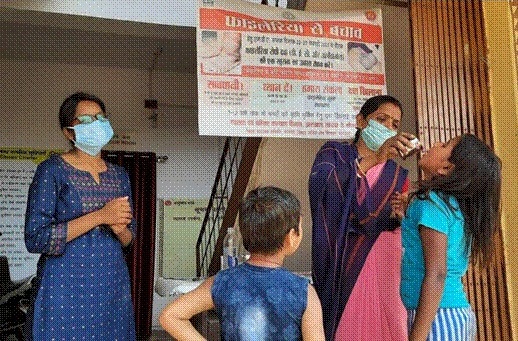Nirbhay Kumar
New Delhi: A full-blown Covid-19 crisis is waiting to erupt in the rural parts of India which largely remained insulated in the first wave of virus spread last year. Ground reports suggest it is a matter of weeks before a health crisis of epic proportion takes people in its grip.
Millions of workers returning home from big cities, many of them carrying the virus, and abysmal healthcare systems are set to make the situation worse.
Public health experts see the situation going out of control once pandemic takes hold as big hospitals are only in government sector and that too in district headquarters while private hospitals with 30-50 bed capacity are not good enough to manage Covid patients.
Indian Medical Association (IMA) National Vice President Dr Ashok Rai termed the situation in rural areas as alarming and emphasized the need for the government to prepare for the crisis on war-footing.
“In the rural areas, almost every home is getting affected by Covid. They are not going for testing and do self-treatment as in case of normal viral fever with only those in serious condition visiting hospital. State governments (as in case of Uttar Pradesh) are building health infrastructure by turning community health centres into Covid hospitals at some places but that may not be sufficient,” Dr Rai told Top Lead India.
India is currently reporting most cases of the deadly virus, around 4 lakh daily cases, in the world overwhelming the entire health system of the country. Due to insufficient beds and unavailability of oxygen and ventilators people have been dying. As per official data, the daily death count is over 3,000.
While the government has been caught off-guard to deal with the current Covid situation despite almost a year at hand, spread of virus into interior parts of the country could make the situation worse. Unfortunately, the worst fear of virus travelling to villages is coming true.
“When it was time to prepare for the pandemic, the central government was busy in other things and did not consider it serious enough. Now the Corona situation is horrific and spreading in villages. It is virtually out of control of the government. Now it cannot be contained by just going for lockdown,” said Bihar State Congress spokesperson Rajesh Rathore.
Talking about prevailing situation in rural Bihar, Rathore said that about 20-40% people in each village have been affected by the virus. Further, infection is not spreading fast as houses in villages are bigger compared to cities.
“The government did not prepare at all. Neither medicines nor hospital beds are available. There is severe shortage of oxygen. Oxygen cylinders are not available. There is requirement of 600-1,000 oxygen cylinders for each block. A minimum of 100 cylinders need to be provided to each panchayat,” he said.
There seems a lot of merit in Congress spokesperson’s suggestion given that the death rate in Germany in the beginning of the Coronavirus spread was lower compared to Italy primarily because of more ICU beds in case of the former.
“COVID mortality in Germany was 4.63% in the beginning of the first phase while mortality in Italy was 14.22%. It was because Germany had 29 ICU beds per one lakh population and Italy had 13,” said a public policy expert working with central government. In India, ICU beds per one lakh population is two or even less than that.
Unlike cities which have seen new health infrastructure coming up in private sector over the last two decades, rural health infrastructure is creaking and almost non-existent in many areas. The government hospitals in district headquarters are generally in pitiable condition and have already saturated. In case of an in-patient in these hospitals requires advanced treatment, the only option is to shift him or her to the state capital. The district hospitals in most cases do not have enough specialists.
As per the current demand for health facilities, each district hospital should have at least 200 young medical specialists who are trained to manage a patient on a ventilator.
Experts say that about 5% of the COVID patients need ICU care and ventilator support. Further, the number of specialists who could connect the COVID patients to a ventilator is much less.
“Most district hospitals have up to 80% shortage of specialists,” said an official.
While strengthening the healthcare system and bringing it at par with other major countries is a long-term exercise, the immediate requirement is providing adequate testing facilities in rural areas and basic care for mild patients.
In order to achieve this, ambulances and mobile vans could be equipped to screen, collect samples for tests and transport the serious patients to nearest town hospitals. But even this has proved to be a far-fetched dream.
I plead guilty: What PM Modi should have said in his address to nation

